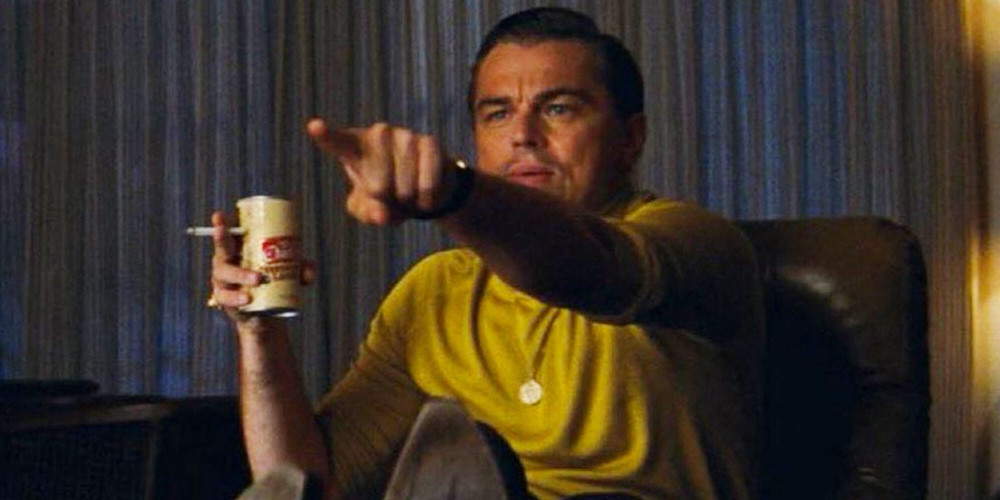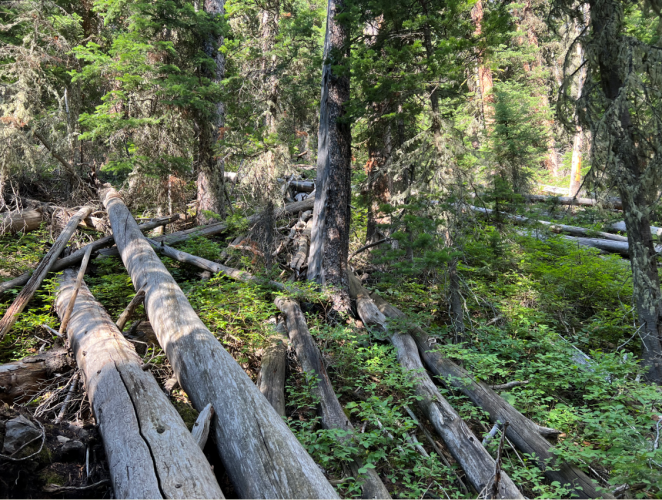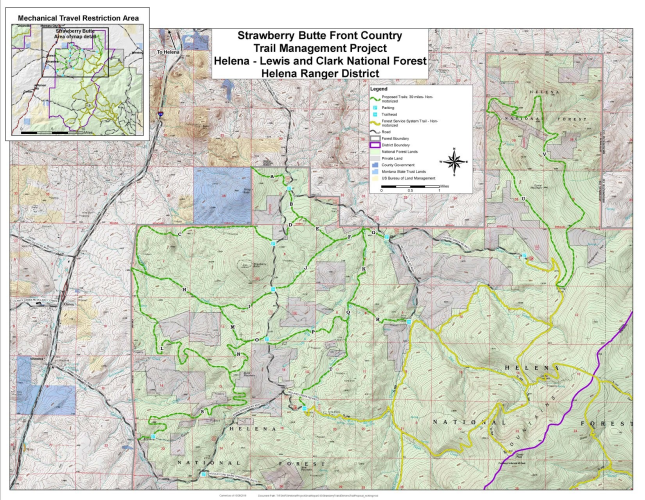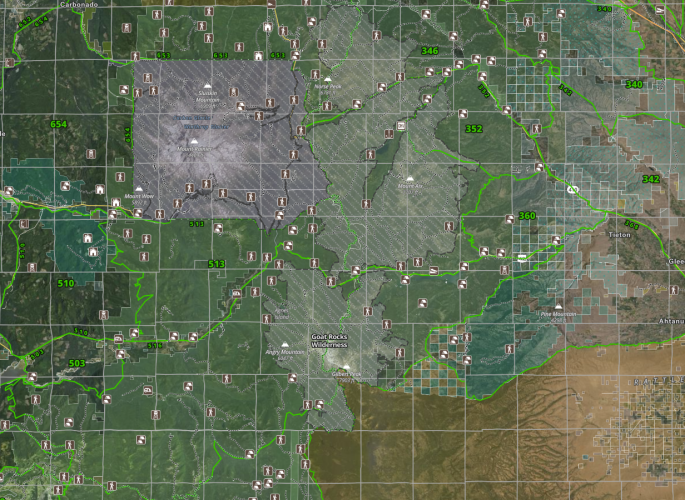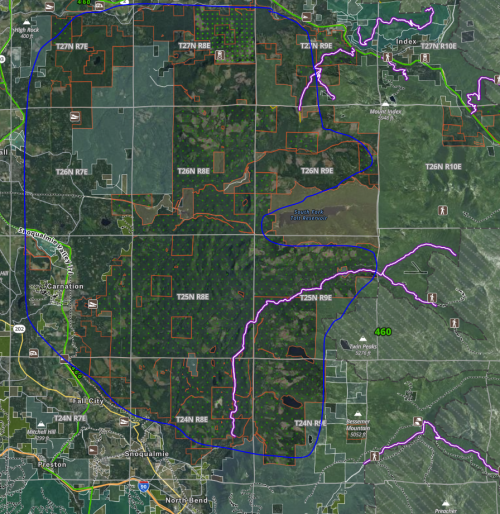Nameless Range
Well-known member
This is not about hunting – necessarily – though there may be some throughlines. This about trails.
It’s intuitive- there’s a thing(X) existing in an area or volume (Y). X/Y. If we double the area/volume of Y, X/2Y, the proportion of the numerator to the denominator will be half of what it was. Works in a beaker.
Numerous times I have heard similar arguments in regard to crowding on public lands. I suppose there are places where the logic may hold in spirit, but mostly it doesn’t, and I think the problem, counterintuitively, can be actually be made worse in the world of trails.
Two times in the last few months – once from an advocate for new trail development in the Elkhorns, and once from one of Montana’s leading motorized use advocates – I have heard this argument:
The public is concerned with the amount of pressure and use a place is getting. The retort from trail advocate x is, “That’s why we need new trails. To spread the pressure out. It’s the only way.” I bolded the last part because I heard both advocates say those exact words. I believe this is a fallacy, not only marshalled by advocates for new trail development on public lands, but also some land managers.
A place has 10 miles of trails, popular with whoever - hikers, mountain bikers, UHVers. A proposal for the creation of an additional 10 miles of trail in the system comes along - doubling the trail mileage on offer. Has the disturbance – the crowding – been reduced by half? I don't think so. Some users are now exploiting 20 miles in a day instead of 10 - maybe twice. Not all use is created equal, but the more disturbance on the landscape per-unit-time that the activity is capable of, the less meaningful the dilution more trails will provide. This is a key, and in many circles, unpopular fact. Disturbance per-unit-time, which in some cases correlates strongly with effort and in others does not, is a powerful multiplier not to be ignored. Further, because the place is so Godd@amn “sick” now with all the new trails, the destination aspect of gravity to the herds kicks in.
So what can we do? The status quo of the landscape in conjunction with the guarantee of more people guarantees problem areas will become worse, does it not? I think in the case of certain types of use, intelligent trail planning may be a large part of the solution – loops, directional trails, etc. In others though, I wonder if we are just doomed, and one man’s stoke is another man’s sacrifice area. I can think of many.
I could dig up studies, propose other examples, build a map or two, but instead this stream of consciousness is where I am at. This isn’t a diatribe against any new trail development, but a word of caution about credulity regarding a line of reasoning I have heard from multiple people with pull in the world of decision making.
“If you build it they will come” isn’t just a line from a 1989 masterpiece.
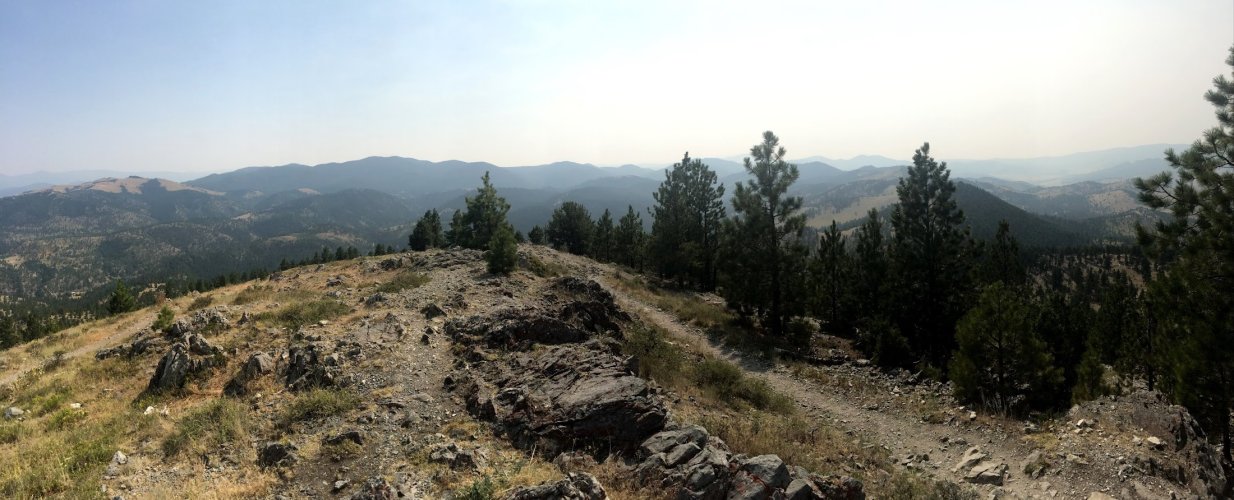
It’s intuitive- there’s a thing(X) existing in an area or volume (Y). X/Y. If we double the area/volume of Y, X/2Y, the proportion of the numerator to the denominator will be half of what it was. Works in a beaker.
Numerous times I have heard similar arguments in regard to crowding on public lands. I suppose there are places where the logic may hold in spirit, but mostly it doesn’t, and I think the problem, counterintuitively, can be actually be made worse in the world of trails.
Two times in the last few months – once from an advocate for new trail development in the Elkhorns, and once from one of Montana’s leading motorized use advocates – I have heard this argument:
The public is concerned with the amount of pressure and use a place is getting. The retort from trail advocate x is, “That’s why we need new trails. To spread the pressure out. It’s the only way.” I bolded the last part because I heard both advocates say those exact words. I believe this is a fallacy, not only marshalled by advocates for new trail development on public lands, but also some land managers.
A place has 10 miles of trails, popular with whoever - hikers, mountain bikers, UHVers. A proposal for the creation of an additional 10 miles of trail in the system comes along - doubling the trail mileage on offer. Has the disturbance – the crowding – been reduced by half? I don't think so. Some users are now exploiting 20 miles in a day instead of 10 - maybe twice. Not all use is created equal, but the more disturbance on the landscape per-unit-time that the activity is capable of, the less meaningful the dilution more trails will provide. This is a key, and in many circles, unpopular fact. Disturbance per-unit-time, which in some cases correlates strongly with effort and in others does not, is a powerful multiplier not to be ignored. Further, because the place is so Godd@amn “sick” now with all the new trails, the destination aspect of gravity to the herds kicks in.
So what can we do? The status quo of the landscape in conjunction with the guarantee of more people guarantees problem areas will become worse, does it not? I think in the case of certain types of use, intelligent trail planning may be a large part of the solution – loops, directional trails, etc. In others though, I wonder if we are just doomed, and one man’s stoke is another man’s sacrifice area. I can think of many.
I could dig up studies, propose other examples, build a map or two, but instead this stream of consciousness is where I am at. This isn’t a diatribe against any new trail development, but a word of caution about credulity regarding a line of reasoning I have heard from multiple people with pull in the world of decision making.
“If you build it they will come” isn’t just a line from a 1989 masterpiece.





